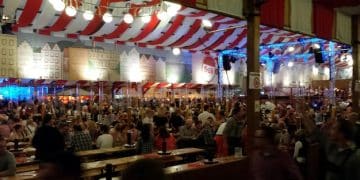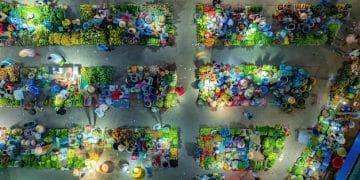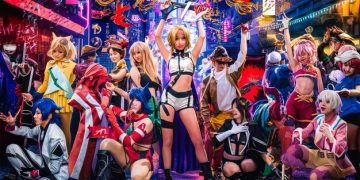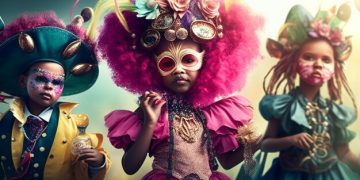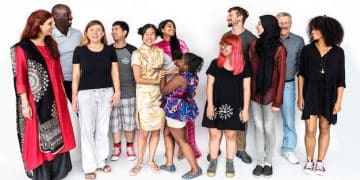Cosplay: More Than Just a Hobby – A Deep Dive into the Art of Cosplay
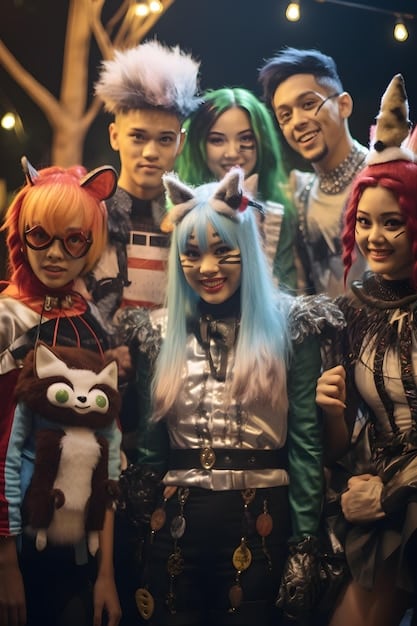
Cosplay transcends mere costuming; it’s a multifaceted art form where enthusiasts embody characters through meticulously crafted costumes and performances, fostering community and self-expression.
Cosplay, short for “costume play,” is a phenomenon that has captured the hearts of geeks and pop culture enthusiasts worldwide. But cosplay is more than just dressing up; it’s an art form, a community, and a powerful form of self-expression. Let’s dive into the fascinating world of cosplay.
What is Cosplay? Unmasking the Fundamentals
At its core, cosplay is the practice of dressing up as characters from various forms of media, including anime, manga, video games, comic books, movies, and television shows. It involves not just wearing a costume, but also embodying the character’s personality, mannerisms, and spirit. This makes cosplay a unique blend of artistic expression and performance art.
Cosplayers invest considerable time, effort, and resources into creating their costumes, often hand-crafting them from scratch using a variety of materials and techniques. The level of detail and accuracy in these costumes can be truly astounding, reflecting the cosplayer’s dedication and passion for their chosen character.
The Origins of Cosplay
While the term “cosplay” is relatively modern, the practice of dressing up as fictional characters has a longer history. Some trace its roots back to the science fiction and fantasy conventions of the early 20th century. However, modern cosplay solidified its identity largely due to the influence of Japanese anime and manga culture.
Key Elements of Cosplay
Several key elements combine to form the art of cosplay. These include:
- Costume Design: The accuracy, craftsmanship, and attention to detail in replicating a character’s outfit.
- Character Emulation: Successfully portraying the character’s personality and mannerisms through acting and posing.
- Presentation: The overall impact of the cosplay, including makeup, accessories, and stage presence.
- Community Engagement: Sharing cosplay creations and experiences with fellow enthusiasts through conventions, social media, and events.
The foundations of cosplay revolve around creative execution and community which are integral to both the creation and celebration of the craft.
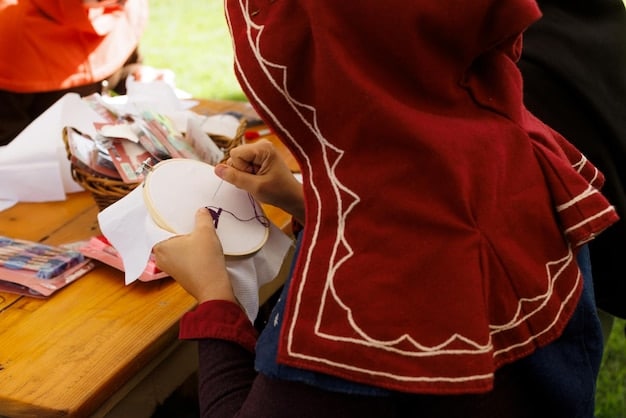
In essence, cosplay is a transformative journey where fans step into the shoes of their beloved characters, expressing their admiration and forging connections with a like-minded community.
Crafting Cosplay: Skills, Materials, and Techniques
Crafting a cosplay costume is both an art and a craft, requiring a wide range of skills and techniques. Many cosplayers dedicate countless hours to learning and mastering these skills, transforming raw materials into breathtakingly accurate replicas of their favorite characters’ outfits. The process involves a lot of research, problem-solving, and creative thinking.
The choice of materials and techniques often depends on the complexity of the costume and the cosplayer’s personal preferences. Some cosplayers opt for traditional methods like sewing and tailoring, while others embrace modern technologies like 3D printing and laser cutting.
Essential Skills for Cosplay
Becoming a skilled cosplayer involves developing expertise in various areas:
- Sewing and Pattern Making: Creating clothing and accessories from fabrics.
- Armor Fabrication: Constructing armor pieces using materials like EVA foam, Worbla, or fiberglass.
- Prop Making: Building replicas of weapons, tools, and other items.
- Wig Styling: Transforming wigs to match a character’s hairstyle.
Popular Materials Used in Cosplay
A diverse range of materials enable cosplayers to achieve intricate and visually stunning results. Some popular choices include:
- EVA Foam: Lightweight, versatile foam for armor and prop making.
- Worbla: Thermoplastic material that can be molded and shaped when heated.
- Fabrics: Various types of fabrics for clothing and accessories, chosen based on texture and appearance.
- 3D Printing Filament: For creating highly detailed and complex parts.
Each of these materials offers unique advantages and challenges, pushing cosplayers to continuously experiment and innovate.

In conclusion, crafting a cosplay outfit is a multifaceted endeavor that combines creativity, technical skills, and a deep understanding of the character being portrayed, making the creation process as rewarding as the result itself.
Cosplay Community: Conventions, Events, and Social Connections
Cosplay isn’t just a solitary hobby; it’s a vibrant and inclusive community that brings together people from all walks of life who share a common passion for pop culture and creative expression. Conventions and events provide opportunities for cosplayers to showcase their creations, connect with fellow enthusiasts, and celebrate their shared interests.
These gatherings serve as a platform for cosplayers to display their craftsmanship, share knowledge, and form lasting friendships. The sense of camaraderie and mutual support within the cosplay community is truly remarkable.
The Role of Conventions
Conventions are central to the cosplay community, providing various platforms for interaction and showcasing:
- Showcasing Cosplays: Cosplayers can participate in contests, parades, and photoshoots.
- Networking: Conventions offer opportunities to meet professional cosplayers, photographers, and vendors.
- Learning and Skill Sharing: Workshops and panels teach various cosplay skills and provide insights.
Building Connections Online
Social media enables cosplayers to share their work, find inspiration, and connect with others globally. Platforms such as
- Instagram: Sharing photos and short videos of costumes and convention experiences.
- Facebook Groups: Joining cosplay groups to discuss projects, ask for advice, and organize meetups.
- TikTok: Creating and sharing short cosplay skits and tutorials.
These online communities create space for support and appreciation, elevating the experience of cosplayers worldwide.
Ultimately, the cosplay community nurtures both individual expression and collective celebration, enriching the lives of its members through shared passions and creative endeavors.
The Psychology of Cosplay: Identity, Expression, and Empowerment
Beyond the costumes and conventions, cosplay delves into deeper psychological aspects of identity, self-expression, and empowerment. For many, cosplay is a way to explore different facets of their personality, challenge societal norms, and embrace their individuality.
By embodying characters they admire, cosplayers often gain a sense of confidence and self-assurance. The act of transforming themselves into someone else can be incredibly liberating and empowering.
Cosplay and Identity Exploration
Cosplay presents a unique opportunity for individuals to explore different aspects of their identity and personality. It allows people to:
- Discover New Sides: Embracing a character’s personality can reveal previously unexplored traits.
- Break Social Barriers: Adopting the persona of a vastly different character can push social and personal boundaries.
- Build Confidence: Successfully embodying a character can enhance self-esteem and courage.
Empowerment Through Transformation
The transformation inherent in cosplay offers significant psychological benefits:
- Taking Control: Cosplayers exercise control over their appearance and presentation.
- Finding Acceptance: Engaging with the supportive cosplay community provides validation and acceptance.
- Gaining Recognition: Achieving recognition for their dedication and skill boosts confidence and self-worth.
Through creative metamorphosis and communal affirmation, cosplay fosters a profound sense of self-empowerment and personal evolution.
In summary, the psychology of cosplay highlights its transformative impact on individuals, fostering self-discovery, boosting confidence, and providing a unique avenue for personal empowerment.
Cosplay Ethics: Respect, Representation, and Cultural Sensitivity
Like any community, the cosplay world has its own set of ethics and guidelines that promote respect, inclusivity, and cultural sensitivity. These principles are essential for maintaining a positive and welcoming environment for everyone involved.
Cosplayers are encouraged to be mindful of the characters they choose to portray, particularly when it comes to issues of race, gender, religion, and cultural appropriation. It’s crucial to approach these themes with sensitivity and avoid perpetuating harmful stereotypes.
Respecting Intellectual Property
It is important to respect the intellectual property rights of characters and creators. This includes:
- Seeking Permission: When recreating a design, especially for commercial purposes, seek permission from the original creator or copyright holder.
- Avoiding Illegal Activities: Do not create or distribute unauthorized merchandise or content that infringes on copyright.
- Attribution: Always credit the original character designer or artist when showcasing your cosplay, especially in commercial venues.
Promoting Inclusivity and Sensitivity
Cosplayers should strive to embody inclusivity and cultural sensitivity to ensure a welcoming and respectful community. This involves:
- Avoiding Cultural Appropriation: Refrain from adopting elements of a culture without understanding and honoring their significance.
- Respecting Gender Identities: Support the right of individuals to cosplay as any character, regardless of gender.
- Promoting Body Positivity: Encourage and celebrate cosplayers of all body types.
By following these ethical guidelines, cosplayers can help foster a community that celebrates diversity and supports respectful engagement, creating a safer and more enjoyable space for all.
In essence, cosplay ethics emphasize respect, inclusivity, and cultural awareness, fostering a welcoming and responsible community that celebrates individuality while honoring cultural integrity.
Cosplay as a Career: Professional Cosplayers and Opportunities
While cosplay started as a hobby, it has evolved into a viable career path for talented and dedicated individuals. Professional cosplayers can earn a living through various avenues, including endorsements, appearances, commissions, and merchandise sales.
Becoming a professional cosplayer requires not only exceptional craftsmanship and performance skills but also strong business acumen and marketing savvy. It’s about building a brand, cultivating a fan base, and leveraging social media platforms to reach a wider audience.
Pathways to Professional Cosplay
Aspiring professional cosplayers can explore several routes:
- Competition Success: Winning major cosplay contests can provide exposure and sponsorship opportunities.
- Social Media Influencer: Building a large and engaged online following can attract brand partnerships and collaboration opportunities.
- Commissioned Cosplays: Creating custom costumes for individual clients or events provides direct income.
Monetizing Cosplay Skills
Professional cosplayers use innovative strategies to generate income and maintain their presence:
- Merchandise Sales: Selling prints, posters, and other items featuring their cosplay work.
- Workshop Instruction: Teaching cosplay skills and techniques at conventions or online workshops.
- Brand Ambassadorship: Partnering with brands to promote products or services related to cosplay and pop culture.
In effect, cosplay as a career involves skillful craft, creative content, and commercial insight in order to turn a beloved hobby into a livelihood.
| Key Aspect | Brief Summary |
|---|---|
| 🎭 What is Cosplay? | Dressing up as characters from various media. |
| 🧵 Crafting Skills | Sewing, armor fabrication, prop making, and wig styling. |
| 🤝 Cosplay Community | Conventions, events, and online platforms for connection. |
| ⚖️ Cosplay Ethics | Respect, inclusivity, and cultural sensitivity are essential. |
FAQ
▼
Cosplay stands for “costume play.” It combines the elements of costume creation and character portrayal to bring fictional entities to life.
▼
Typical materials include EVA foam, Worbla, various fabrics, 3D printing filaments, and crafting supplies like paint and adhesives, each chosen for durability and likeness.
▼
Enhance your skills by practicing consistently, attending workshops, joining online communities, and experimenting with techniques like sewing, armor-making, and wig styling.
▼
Social media provides opportunities to showcase work, gain exposure, connect with fellow enthusiasts, build global communities, and explore potential entrepreneurial avenues.
▼
Key aspects include respecting intellectual property, promoting inclusivity, showing cultural sensitivity, avoiding cultural appropriation, and ensuring responsible character portrayal and community engagement.
Conclusion
In conclusion, cosplay is a vibrant and multifaceted art form that combines craftsmanship, performance, and community. From meticulously crafting costumes to embodying beloved characters, cosplay allows enthusiasts to express their creativity, connect with like-minded individuals, and explore their identities in a fun and empowering way. Whether you’re a seasoned cosplayer or just starting out, the world of cosplay offers endless opportunities for self-expression, friendship, and artistic growth.
